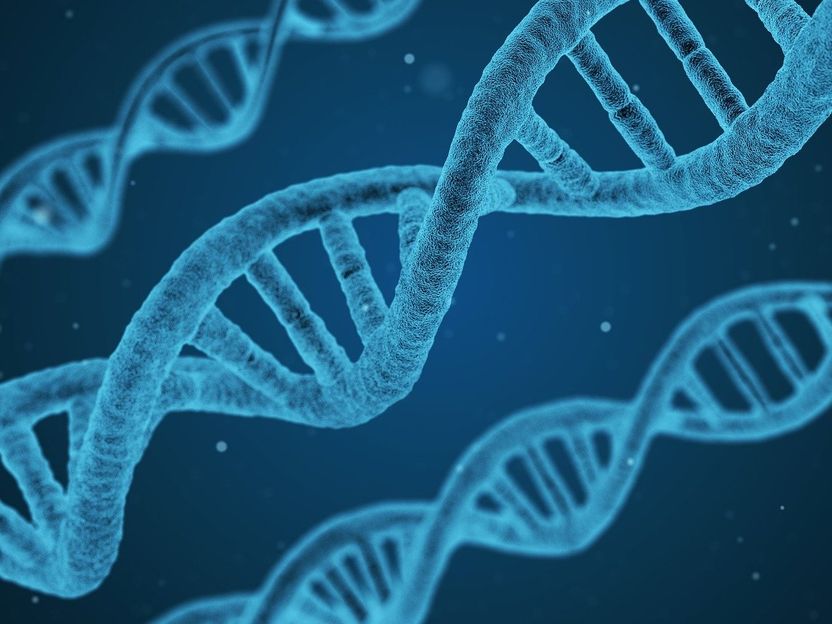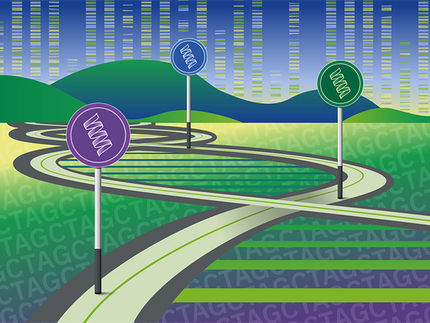BU researchers design artificial genes to sense cellular responses to drugs
Understanding cell communication believed to be the key to developing new and improved medications for a wide range of health conditions.
Researchers from Boston University School of Medicine (BUSM) have developed and implemented a new way to better understand how human cells communicate with each other, how this communication is disrupted in human diseases and how this can be corrected pharmacologically.

qimono/ Pixabay
Their method consists of a suite of "biosensors", which are artificial genes that can be introduced in cells to report in real time when an important group of signaling molecules is turned on. These signaling molecules, "G-proteins," are molecular on/off switches inside cells. They are turned on by a large family of receptor proteins that sense a very wide range of stimuli, including light, odors, neurotransmitters and hormones.
This signaling mechanism has been studied over the course of several decades. However, what is new about these "biosensors" is that they were developed to study G-proteins with an accuracy that was not possible before. "These biosensors are good 'spies' in the sense that they can tell us what G-proteins are doing in real time with a resolution of tens of milliseconds, but without interfering with the signaling process that is being observed," explained corresponding author Mikel Garcia-Marcos, PhD, associate professor of biochemistry at BUSM. "Moreover, our biosensors have the advantage of easy implementation, which allows us to study G-proteins directly in experimental systems that were previously unavailable."
The researchers used molecular engineering to create their biosensors by borrowing parts from existing genes, including genes that encode fluorescent proteins from jellyfish, shape-changing proteins that make muscles contract, light-emitting proteins from deep sea shrimp and proteins known to specifically recognize active G-proteins. They then introduced the engineered genes that make the biosensors into several different types of cells and studied how they responded to stimulation by natural stimuli, like neurotransmitters or clinically used drugs.
According to the researchers, more than one-third of FDA-approved drugs work by activating or inhibiting signaling by G-proteins including common allergy medications, nasal decongestants, highly prescribed drugs for blood pressure, first-line treatment for Parkinson's, analgesics, anti-psychotics as well as cannabis and opioids.
Lead author Marcin Maziarz, PhD, post-doc in the Garcia-Marcos' laboratory, believes these biosensors can be instrumental in drug discovery and drug development and in characterizing the mode of action of many existing medications. "What we're doing today is important because it will allow researchers to more easily and accurately identify drugs more likely to be successful in clinical trials since many drugs that initially show promise in experimental systems eventually fail to deliver clinical results," he said.
Most read news
Organizations
Other news from the department science
These products might interest you

Octet R2 / Octet R4 / Octet R8 by Sartorius
Full power on 2, 4 or 8 channels: Label-free and GxP-compliant analysis of molecular interactions
Innovative label-free real-time protein quantification, binding kinetics and rapid screenings

Octet RH16 and RH96 by Sartorius
Efficient protein analysis for process optimisation and manufacturing control in high-throughput
Label-free protein quantification and characterization of protein-protein interactions

Octet SF3 by Sartorius
Surface Plasmon Resonance (SPR) using Single Dynamic Injections for Kinetics and Affinities
Curvature is Key - Adding a ‘Third Dimension’ to the Binding Curve

Get the life science industry in your inbox
By submitting this form you agree that LUMITOS AG will send you the newsletter(s) selected above by email. Your data will not be passed on to third parties. Your data will be stored and processed in accordance with our data protection regulations. LUMITOS may contact you by email for the purpose of advertising or market and opinion surveys. You can revoke your consent at any time without giving reasons to LUMITOS AG, Ernst-Augustin-Str. 2, 12489 Berlin, Germany or by e-mail at revoke@lumitos.com with effect for the future. In addition, each email contains a link to unsubscribe from the corresponding newsletter.




















































